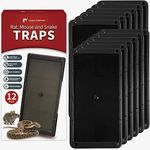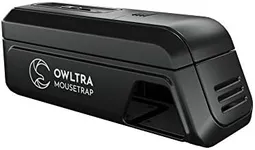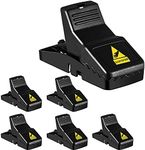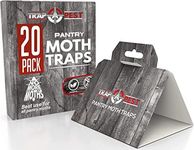Buying Guide for the Best Mouse Poisons
Choosing the right mouse poison is important for effectively dealing with rodent problems while also considering safety for people, pets, and the environment. Before buying, think about where you’ll use the poison, who might come into contact with it, and how quickly you want results. Understanding the different types and how they work will help you make a safer and more effective choice.Active IngredientThe active ingredient is the chemical in the poison that kills the mouse. This is important because different ingredients work in different ways and have varying levels of toxicity. Some common types are anticoagulants, which cause internal bleeding over time, and non-anticoagulants, which can kill more quickly or in different ways. Anticoagulants are often slower but allow for multiple feedings, while non-anticoagulants can be faster but may be more dangerous to pets and children. Choose an active ingredient based on how quickly you want results and the safety needs of your household.
Formulation TypeFormulation type refers to the physical form of the poison, such as pellets, blocks, or liquid. This matters because some forms are easier to place in certain areas or are less likely to be scattered by rodents. Pellets are good for tight spaces, blocks are weather-resistant and suitable for outdoor use, and liquids can be used where food competition is high. Pick a formulation that matches where you plan to use the poison and how accessible you want it to be for mice.
Secondary Poisoning RiskSecondary poisoning risk is the chance that another animal (like a pet or predator) could be harmed by eating a poisoned mouse. This is important if you have pets or wildlife nearby. Some poisons, especially certain anticoagulants, have a higher risk of secondary poisoning. If you are concerned about other animals, look for products with a lower risk or consider using bait stations to limit access.
Time to KillTime to kill is how long it takes for the poison to work after a mouse eats it. Some poisons act within hours, while others take several days. Fast-acting poisons can quickly reduce a population but may cause mice to die in visible or inconvenient places. Slower poisons allow mice to return to their nests before dying, which can be more discreet. Choose based on how quickly you want results and whether you mind dealing with dead mice in open areas.
Bait AttractivenessBait attractiveness is how appealing the poison is to mice. This is important because if the mice don’t eat the bait, it won’t work. Some poisons are mixed with food ingredients that are more tempting to rodents. If you have a lot of competing food sources, pick a bait that is known to be highly attractive to mice.
Safety FeaturesSafety features include things like tamper-resistant bait stations or bittering agents that make the poison taste bad to humans and pets. These are important if you have children or animals in your home. If safety is a concern, look for products with built-in safety features or use a separate bait station to keep the poison out of reach.

















